2023 Gift Guide: Middle Grade for Ages 8-14
November 28, 2023 § Leave a comment

In the fourth installment of this year’s Gift Guide, we’re turning our attention to middle-grade reads that aren’t graphic novels (those will get their own installment next!). I’m especially proud of this grouping, which includes standard middle grade (ages 8-12), as well as upper middle grade, an expanding category aimed at middle schoolers who might not be ready for the comparative heaviness of young adult literature. All but two are new this fall. (I had to throw in The Swifts and What Happened to Rachel Riley? even though they were included in round-ups earlier in the year, because they are too good not to recommend one more time for the people in the back.)
I was especially picky when choosing these titles—translate: I read and rejected, read and rejected—because I’m finding an increasing disconnect between what publishers are publishing and what today’s young readers want to read. Many of you have echoed my struggle to find shorter, faster-paced stories that hook readers straight out of the gate, that are funny and fun but still amount to something meaningful and authentic. Others have readers who tear through books so quickly that the challenge becomes finding something meaty, challenging, original. Some of you have complained that there aren’t enough realistic middle grade with boy protagonists (you’re correct). Others have kids who only read fantasy or nonfiction. I hope you will find all of these needs answered in the collection below, which truly offers something for every kind of reader.
All these books are in stock at Old Town Books, where I work as the children’s buyer, so especially if you’re local, I hope you will consider supporting our beautifully curated store!
And for those looking for more stand-out 2023 middle grade, check out my Summer Reading Guide here and here and my Spring Break Reading Round-Up here.
Titles are arranged from youngest to oldest, so if you have readers closer to ages 12-14, you’ll want to scroll down.
For the K9 Pal
Dogtown
by Katherine Applegate & Gennifer Choldenko; illus. Wallace West
Ages 8-12
If you think you already love dogs, just wait until you read Dogtown, the latest gem from Katherine Applegate, co-written with Gennifer Choldenko. Applegate does what she does best, infusing humor into heart-tugging themes, while ensuring the short, fast-paced chapters, spot illustrations (by Wallace West), and ample white space feel accessible to even the most skeptical of middle-grade readers. And then there’s the dog content. So much good dog content.
Our canine narrator, Chance, may not be “American Kennel Club material,” owing to having only three legs, but what she lacks in limbs she more than makes up for in wit. And opinions. Starting with an inherent distrust of the robot dogs brought in to boost adoption traffic to Dogtown, the shelter where Chance has lived ever since her owners left her with negligent dog-sitters. As far as Chance is concerned, compared to the real dogs of Dogtown, robot dogs are nothing more than “hunk[s] of steel with the personality of a paperweight.” What’s worse: because they’re accident-proof, they’re quicker to be adopted than the real collies and corgis, poodles and labradoodles, whom Chance is so fond of. Chance especially has it out for Metal Head, who looks nothing like what a dog is supposed to look like and consistently malfunctions by flashing blue lights.
But Chance has been gifted with acute observation skills, and as she spends more time with Metal Head, she discovers he’s not like the other robot dogs. For one, he reads. For two, he speaks Dog. And thirdly, his heart is as lonely as Chance’s. With the help of a resourceful mouse, can the two strike up an alliance and work together to find their forever homes? An uplifting story that reminds us, “Your heart is a muscle. It grows stronger the more you use it.”
For the Independent Minded
Nothing Else But Miracles
by Kate Albus
Ages 8-12
Some of you will remember that Kate Albus’ debut middle grade, A Place to Hang the Moon, is one of our family’s favorite read-alouds EVER. So, when my daughter and I embarked upon her sophomore novel, Nothing Else But Miracles, we felt some trepidation. Turns out we needn’t have worried: Albus’ prose is as cozy and funny and effortless to read as ever, her historical settings enticing, and her characters destined for our hearts. It’s another perfect family read aloud celebrating community, resourcefulness, and sibling love. (Plus you can visit some of the places in the book during your next trip to NYC!)
Set in the summer of 1944, in the weeks before and after D-Day, twelve-year-old Dory Byrne lives with her two brothers in NYC’s Lower East Side, where she enjoys daily confessions to Libby (that’s Lady Liberty to you), among other ways to keep her spirits up while she waits for her father to return from fighting Hitler. Legally speaking, her brother Fish isn’t old enough to take care of Dory and her younger brother, but as Papa reminds them, “the neighborhood will give you what you need,” and the three scrape by on the generosity and kindness of dear neighbors. That is, until they get a new landlord, who suspects there’s something fishy about the children’s living arrangement and contacts the authorities. If the children want to escape the orphanage, they need to act fast, and Dory has a plan, albeit a highly unconventional and risky one.
Without spoiling too much, I’ll just add that the story was inspired by a 1952 New Yorker essay by Joseph Mitchell, about an abandoned hotel on the upper floors of what used to be the Fulton Fish Market and is now part of the South Street Seaport Museum, accessible only by a very, very old dumbwaiter.
For the Puzzler
The Winterton Deception: Final Words
by Janet Sumner Johnson
Ages 8-12
A modern Westing Game with the accessibility of Escape from Lemoncello’s Library and a touch of Knives Out? Introducing one of the fastest-paced series openers of the year, The Winterton Deception: Final Words. Readers will fly through the pages of this inheritance mystery, deciphering clues in real time alongside its characters, while also giving thought to weightier questions around power and privilege.
Hope Smith can’t stand rich people, so when she discovers that her biological father hailed from the dictionary magnate family the Wintertons, she writes him off. On the other hand, her twin brother, Gordon, is curious about the man their mother never talks about, and he secretly enters the three of them in the Winterton’s annual charity spelling bee, held at the Winterton Chalet and boasting a cash reward for the winning family. Hope only agrees to go along because the money would save their family from being evicted. She’s also smart as a whip and determined to beat the Wintertons at their own game.
After winning the preliminary round, the Smiths move into the Chalet, where they find themselves competing against many of the Wintertons themselves. Of course, none of these long-lost relatives suspect that they’re related to Hope and Gordon, but that’s not the only thing that isn’t what it seems. The spelling bee turns out to be a cover for a higher-stakes scavenger hunt, devised by matriarch Jane Winterton before her death as a way to force her children to face the dangerous secrets of their past. With literary clues and stints through secret passageways, the chase also comes with a much, much bigger reward…if the winner can survive.
For the Sleuth
The Improbable Tales of Baskerville Hall
by Ali Sandish
Ages 8-12
What if Arthur Conan Doyle, the boy who would go on to pen Sherlock Holmes, had gone to a secret school for gifted kids, where he met many of the characters that would surface later in his stories? That’s the premise behind The Improbable Tales of Baskerville Hall, a cozy series starter which will satisfy fans of boarding school settings and mysteries alike.
When Arthur receives a letter offering him admission, all expenses paid, to the elite Baskerville Hall, he doesn’t question its origins; he jumps at the chance to make something of himself sooner rather than later, with money so tight at home. Before he knows it, he is sailing in an airship—check that, he’s steering the technological marvel while the school’s headmaster naps in the back—to a place that doesn’t resemble any school Arthur has ever heard of. There’s a dodo bird on the grounds and a gorilla behind a locked door. There are classes in Psychical Sciences and classrooms filled with 100 clocks, secret societies with midnight invitations and rope ladders to sneak out windows. And there are strange, marvelous people: one fond of lining her pockets with small animals and tiny sticks of dynamite, another adept at writing fake obituaries. Of course, there are also Malfoy-worthy adversaries and those who would underestimate a boy who hails from such humble origins.
Among this eclectic cast is Irene Eagle, a strong-willed girl set on righting wrongs, and Jimmie Moriarty, a boy whose brilliance rivals Arthur’s own. (Also, their professor of Anatomy and Physiology, Dr. Watson.) Familiarity with the Sherlock Holmes-verse isn’t necessary to be charmed by these cameos. What will keep readers hooked is the way young Arthur’s time at the school, with the rumblings of sinister secrets rising to the surface, serves to hone his powers of observation, helping him see what others cannot (except, occasionally, what’s right in front of his nose).
For the Kid Facing Transition
Ginny Off the Map
by Caroline Hickey; illus. Kelly Murphy
Ages 8-12
Meet my new favorite book on the theme of moving. There is so much authentic tween angst in Ginny Off the Map—I mean that in the best way!—that it will feel like a lifeline to kids navigating relocations or school changes, whether in military families or not. Bonus for a sharp, spunky, neurodivergent narrator, relatable sibling strife, and heaps of fascinating geography trivia.
With her dad in the military, Ginny is used to moving, but after two years in North Carolina, on the last day of fifth grade and just as she was starting to feel settled, her parents drop a familiar bomb. Effective immediately, they’re moving to Maryland, only this time, in addition to adjusting to a new town and school, Ginny will say goodbye to her father for six long months, as he serves a term in Afghanistan. Ginny isn’t the easiest nut to crack, and the one person who has always embraced her quirks is her dad.
The *only* thing that will make summer in a new place bearable is that her dad has signed her up for geography camp. Ginny consumes geography at every turn, including flipping through her notecards of facts about the greater world to steady her nerves in times of stress and uncertainty. But when the camp is abruptly canceled due to lack of interest, and Ginny finds herself in jewelry-making classes, the blows just keep on coming. It doesn’t help that she lives with an older sister who exudes coolness. Or that she’s growing increasingly worried about not hearing from her dad. Or that the STEM-magnet school she was hoping to attend in the fall doesn’t have room for her. Or that her best attempts to take back control of her summer by starting a geography camp for the neighbors turn disastrous.
Lucky us that we get to watch Ginny navigate the most difficult summer of her life with humor, grit, vulnerability, increasing empathy, and fierce intelligence.
For the Mythology Buff
The Widely Unknown Myth of Apple & Dorothy
by Corey Ann Haydu
Ages 8-12
Would you choose to be a human or a god? More than an original myth, this is a story for those who aren’t afraid to sit in the stickiness of being human. Corey Ann Haydu’s The Widely Unknown Myth of Apple & Dorothy may be a perfectly penned myth of a fated friendship, starring the descendants of Greek gods, nymphs, and muses, but it brilliantly and simultaneously exposes the limitations of myth, elevating instead the kind of questions that don’t have tidy answers. It’s a story that proposes, what if our purpose isn’t to make everything beautiful, but to make things matter?
Each winter solstice, every near-god—those who live in the hills above the human world but below the clouds of the gods—must climb a ladder to Mount Olympus to preserve their immortality. Except one year, when Dorothy’s mother refuses, a decision that not only seals her fate to die soon after, but sets into motion godly retaliation. Along with Zeus’ lightning bolt comes a decree: there are to be no more near-gods. In exactly one month, everyone must choose between living as humans on earth or gods in the heavens.
The story is delivered through the alternating perspectives of Dorothy, who grieves her mother deeply, and Apple, the daughter of her mother’s best friend. Dorothy and Apple have been thrown together since birth, but theirs has been a strained friendship, with beautiful, popular Apple a descendent of Zeus and Hera, and quiet, dreamy Dorothy hailing from the tainted line of Pandora. With the death of Dorothy’s mom, the two cling to one another for different reasons: Apple helps Dorothy remember her mom, while in Dorothy’s presence Apple gets a respite from the pressure to be perfect. But as the decision to go to Mount Olympus or not draws closer and Apple refuses to be without Dorothy, the former contemplates a decision that could prove disastrous for their friendship—and their futures.
For the Fantasy Lover
The Spirit Glass
by Roshani Chokshi
Ages 9-13
I’m in awe of Roshani Chokshi’s ability to weave together profound questions about grief and mortality with excitement and laugh-out-loud humor. And her world building is second to none! The Spirit Glass is a riveting ghost story, inspired by Filipino mythology, and one of the finest fantasies of the year. Think: an enchanted house attuned to your moods, a sea of stars, a Library of Mirrors, and ice cream flavors harvested from the emotional baggage of the dead. Not to mention: shy sea serpents, flamboyant water dragons, and the ghosts of sort of dead people and really, really dead people.
Corazon Lopez has been counting down the days until her twelfth birthday, when she is sure her aunt, Tina, will finally teach her to harness her magic and become a powerful babaylan like the women in their family. What she hasn’t confessed is what she plans to do with her magic: bring back her parents from the dead so she no longer has to rely on the soul key around her neck to converse with their ghosts on Saturday nights. But then her birthday passes with no indication that Tina plans to begin Corazon’s training, and in her frustration, she lets down her guard and allows a restless, grotesque spirit intent on getting back to the land of the living to steal the soul key. With the key in the wrong hands, the fragile balance between the human and spirit worlds is thrown into chaos.
With only her wits, the mysterious instructions of her aunt, and a magic that’s far from mastered, Corazon must embark on a quest through the spirit realms to gather the necessary ingredients to lay the vengeful ghost to rest. Here’s where the humor comes in: she is joined by Sasso, her tiny gecko-sized lizard with delusions of grandeur—he prefers “deadly reptile steed”—and a writerly ghost named Leo, who agrees to act as their guide because he thinks the certain peril will make for a lively memoir. Corazon’s learning curve is immense, as much about the workings of the spirit realms as about her own family history and the “bumps and lumps and roads and cliffs” inherent in human love and loss.
For the Wednesday Addams Fan
The Swifts
by Beth Lincoln; illus. Claire Powell
Ages 9-13
As soon as I read Beth Lincoln’s introduction to The Swifts: A Dictionary of Scoundrels, I knew I wanted to read this whodunit to my daughter. I suspected a story of British sensibilities, of dry, erudite humor, of eccentric characters and shocking outcomes and a house replete with secret passages, would be a ton of fun to read aloud. I also suspected, if left to her own devices, my daughter would probably gloss over—or, gasp, butcher!—the robust, uncommon vocabulary at play on every page, and the English major in me couldn’t have that. After all, one of the benefits to reading aloud is showcasing correct pronunciation!
AND I WAS RIGHT! The Swifts offers cleverness, frivolity, and chuckles—so many chuckles—alongside just the right amount of dark intrigue. But it also provides poignant moments of inter-generational and sibling connection, as well as grounds for debating nature vs nurture. Plus, with her oddball manners, penchant for mischief, and misplaced confidence, Shenanigan Swift has some serious Wednesday Addams vibes.
Let’s talk about the Swifts. Every member of this legacy family is named from a noun in the dictionary, their personalities literally carved in (grave)stone at birth. There’s a treasure called Vile’s Hoard, allegedly hidden in the rambling country house where Shenanigan lives with her Arch-Aunt Schadenfreude, Uncle Maelstrom, and siblings, Felicity and Phenomena. There’s a Family Reunion, where relatives from near and far descend on the house to look for said treasure. And the dead bodies start stacking up almost immediately, as one of the Swifts (or Swift wannabee?) appears to stop at nothing for a chance at this family fortune. Who is determined to suss out the murderer once the adults prove themselves wildly incompetent? Why, Shenanigan and her siblings, of course!
For the Investigative Journalist
What Happened to Rachel Riley?
by Claire Swinarski
Ages 10-14
A mystery told through emails, text chains, podcast interviews, passed notes, and traditional prose? What Happened to Rachel Riley? is gold for today’s readers, reluctant and avid alike. What’s gold for parents and teachers? The opportunity for kids to consider what advocacy looks like in a school setting, what it means to stand up to our close friends and classmates, what it looks like when girls push back against things their gut tells them are not OK—and what happens when they don’t.
Anna Hunt aspires to be an investigative journalist like her idol, the podcaster Mimi Miller. After all, she has always been more of an observer than a participant, more at ease with her nose in a book than making small talk with peers. Perhaps that’s why, as the new kid in eighth grade at East Middle School, she immediately notices there’s something the other kids aren’t telling her. Or even talking about amongst themselves. All she knows is that it has something to do with her classmate, Rachel Riley, once the most popular girl in school—or so her Instagram feed would suggest—and now a seemingly social pariah. When Anna’s eighth grade Social Issues class is assigned a project of their choosing, she seizes the chance to investigate Rachel. Even after the school—and her parents—demand she switch topics, she continues anyway, determined to right a wrong she suspects is out there.
As the clues mount—anonymous notes, a barn fire, stolen hall passes, a website taken down in a hurry—Anna realizes the truth is far bigger than Rachel Riley. This is a #metoo story, but it concerns the kind of behaviors that often fly under the radar: “friendly” butt slaps, snapping bras, a points system for ranking girls’ attractiveness. The kind of behaviors we think we should just ignore or laugh off, for fear of making waves or drawing bad attention. And, in Claire Swinarski’s excellent authorial hands, it’s a story with no easy answers, a story that honors the messy complexity of adolescent friendships and the challenge of knowing yourself, much less claiming your space, in a culture of mixed messages.
For the Spacehead
Farther Than the Moon
by Lindsay Lackey
Ages 10-14
My oldest dreams of becoming a rocket scientist, so I consider myself something of an expert at finding books on this subject. And while there is lots in the non-fiction category, there is far, far less in the literary space. So, imagine my delight at finding a fast-paced, dialogue-driven novel that packs in tons of space history and rocket design, while ALSO delivering a beautiful, poignant story about family bonds, inclusivity, collaboration, and reaching for the stars. Lindsay Lackey’s Farther Than the Moon doesn’t simply fill a hole: it’s going to get DEVOURED by STEM-hungry readers. And maybe, if I’m any indication, convert a few non-spaceheads, too.
When 13-year-old Houston is accepted into the highly competitive Junior Astronaut Recruitment Summer Program, he is one step closer to his dream of becoming an astronaut. From the moment he arrives in Texas, he eats, sleeps, and breathes space, from his equally savvy classmates, to the technical group challenges they compete in, to the prizes that reward them (like riding in a supersonic jet piloted by a NASA astronaut). Houston even gets to meet one of his real-life astronaut heroes—his long-lost grandfather.
But even while Houston is off chasing his dreams, the experience is bittersweet because of what he leaves behind. Back home, Houston’s younger brother, Robbie, is every bit the space enthusiast that Houston is; the two have long bonded over their shared dream of exploring space together. But Robbie’s cerebral palsy and epilepsy, requiring near constant medical attention, make these dreams far, far more challenging. The window into Houston’s tender relationship with his non-verbal brother is beautiful, but what makes it so central to the story is the way it inspires Houston to approach his final project in Texas, reminding us that the greatest leaps for mankind often take inspiration from the personal.
For the Dystopian Fan
Alebrijes
by Donna Barba Higuera
Ages 10-15
“The smallest flap of wings can change the course of history.” The award for the most original piece of writing this year goes to Alebrijies, a dark but hopeful dystopian novel by Donna Barba Higuera, the 2022 Newbery Medalist behind The Last Cuentista. With some of the most elevated writing and complex world building you’ll find in upper middle-grade literature, this is going to blow the mind of the right reader. No expense has been spared in its ultra-gifty case cover, either (the benefit of being a Newbery Medalist). But what’s most powerful here is the story of an adolescent, completely deprived of structural power, whose relentless determination to protect his family and community renders him capable of the ultimate heroism.
Four hundred years after the collapse of civilization, the world has become a barren wasteland, its only survivors clustered together in the cruel city of Pocatel, where the elite prey upon the Cascabeles, descendants of migrant workers who are forced to work the fields for meager rations and scanty shelter. This system of subjugation hinges on both groups having been conditioned to fear the wandering spirits, vicious wyrms, and necrotizing sand pits that lie in wait outside the city walls, waiting to devour the banished.
Leandro, a 13-year-old pickpocket, does what he can to keep his sister from starvation and illness, so when Gabi is caught stealing a piece of fruit from a Pocatelan stand, he takes the fall. But right before he is banished, his executioner changes course and places his consciousness inside an ancient drone, with secret instructions to fly far from the city, learn the truth, and formulate a plan to save them all. What begins as speculative fiction becomes eerily familiar as it goes on to hold up a mirror to our own world.
For the Sports Fan
Free Throws, Friendship, and Other Things We Fouled Up
by Jenn Bishop
Ages 10-14
I am so excited to have a basketball-themed story to recommend—and a thoughtful examination of middle school friendship to boot! The characters in Free Throws, Friendship, and Other Things We Fouled Up may eat, breathe, and sleep basketball, like so many of their Cincinnati neighbors, but as they’ll discover, the wins that count the most are the ones made out of the free throws and fouls that happen off the court. (Also, there’s a basketball-coaching, butt-kicking, wisdom-dispensing nun in the story so…)
Used to moving schools to follow her father’s coaching career, eighth-grader Rory has never put much stake in having a best friend. But when her father secures a new gig in his hometown at the University of Cincinnati, she decides it’s finally safe to put down roots and open up to a quirky, chili-loving classmate named Abby, whose father coaches the Division 1 team at Xavier University and who, despite rooting for opposing teams, loves to play basketball as much as Rory, even if she recently quit the school team under mysterious circumstances.
But the two quickly discover their friendship may be ill-fated. It turns out their fathers, who grew up playing basketball together as best friends, cannot stand the sight of one another. What could have possibly caused such a riff? With their dads unwilling the divulge details, the two secretly investigate their fathers’ pasts, while simultaneously delving into some tough questions of their own around privilege and talent, forgiveness and reparation, and finding your confidence on and off the court.
For the Nonfiction Reader
The Mona Lisa Vanishes: A Legendary Painter, a Shocking Heist, and the Birth of a Global Celebrity
by Nicholas Day; illus. Brett Helquist
Ages 10-15
This riveting work of narrative nonfiction has turned out to be the unexpected hit of the holiday season, with the publisher furiously working to print more copies after the first print run sold out in record time! But it will be worth the wait, especially for upper middle-grade and YA readers who like to sink their teeth into history that seems too crazy to be real: how a robbery made the Mona Lisa the most famous piece of art in the world.
“La Jaconde, c’est partie! The Mona Lisa, she’s gone!” Did you know the Mona Lisa should never have existed at all? Adopting a dramatic, conversational tone across 46 short, highly readable chapters, The Mona Lisa Vanishes transports us back to turn-of-century Paris to learn about the thieves and detectives, money and politics, of the era, as we trace the events leading up to the creation of Leonardo da Vinci’s Mona Lisa and what followed after the painting quite literally walked out the door of one of the most heavily guarded museums in the world. Who was the mastermind thief? Why did it take so long for police and private investigators to crack the heist? And how did all of this encourage the kind of conspiracy theories and instant fame that remain at the forefront of our lives today?
Nicholas Day is no stranger to narrative nonfiction, but he makes his debut here for young audiences, and we can only hope this will be the beginning of more to come. The cinematic prose is enhanced by thirty black-and-white illustrations by bestselling artist Brett Helquist, who some will recognize for his work on the Series of Unfortunate Events books, as well as another art history thriller, Chasing Vermeer. But fair warning: there’s a very good chance your reader is going to ask to visit Paris after finishing this…
Have you enjoyed this post? Make sure you don’t miss others! Enter your email on the right hand side of my homepage, and you’ll receive a new post in your inbox 2-4 times a month. Plus, follow me on Instagram (@thebookmommy), where I’m active most days, posting reviews and updates on what my kids are reading, or Facebook (What To Read To Your Kids) and Twitter (@thebookmommy).
All opinions are my own. Links support the beautiful Old Town Books, where I am the children’s buyer (and yes, we ship!).
Related
Tagged: 2023 Gift Guide, Ali Sandish, basketball in children's books, Beth Lincoln, books set in middle school, Brett Helquist, Caroline Hickey, chapter books for 12-15, chapter books for 9-12 year olds, chidlren's books about moving, Claire Swinarski, Corey Ann Haydu, Donna Barba Higuera, dystopian stories for children, fantasy, Gennifer Choldenko, Greek mythology for children, Janet Sumner Johnson, Jenn Bishop, Kate Albus, Katherine Applegate, Lindsey Lackey, mysteries and thrillers for teens, narrative non-fiction, Nicholas Day, novels dealing with middle-school friendships, Roshani Chokshi, STEM themes in children's books
This site uses Akismet to reduce spam. Learn how your comment data is processed.
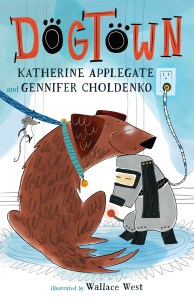
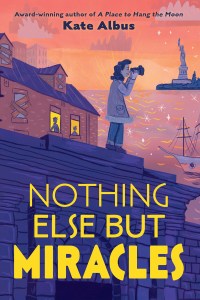
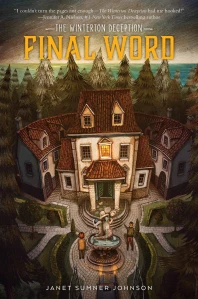
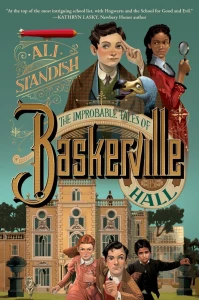
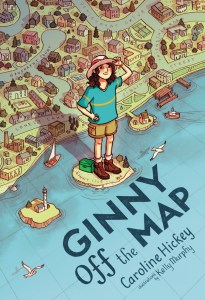
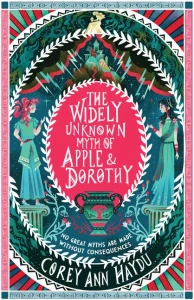
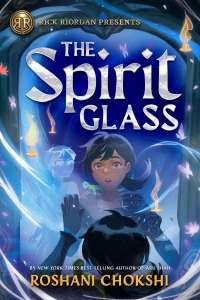
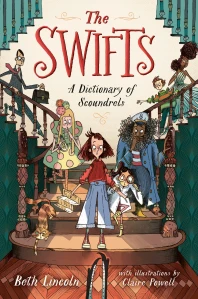
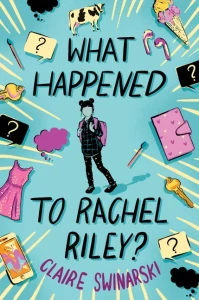
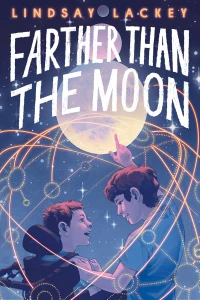
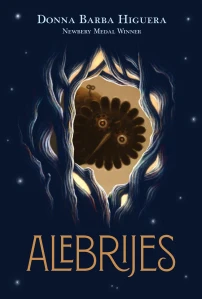
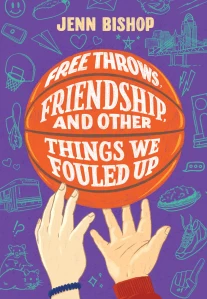
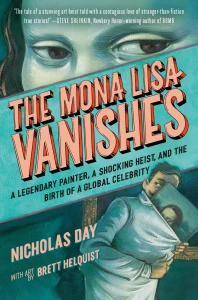
I'd love to hear what you think! Comment here.